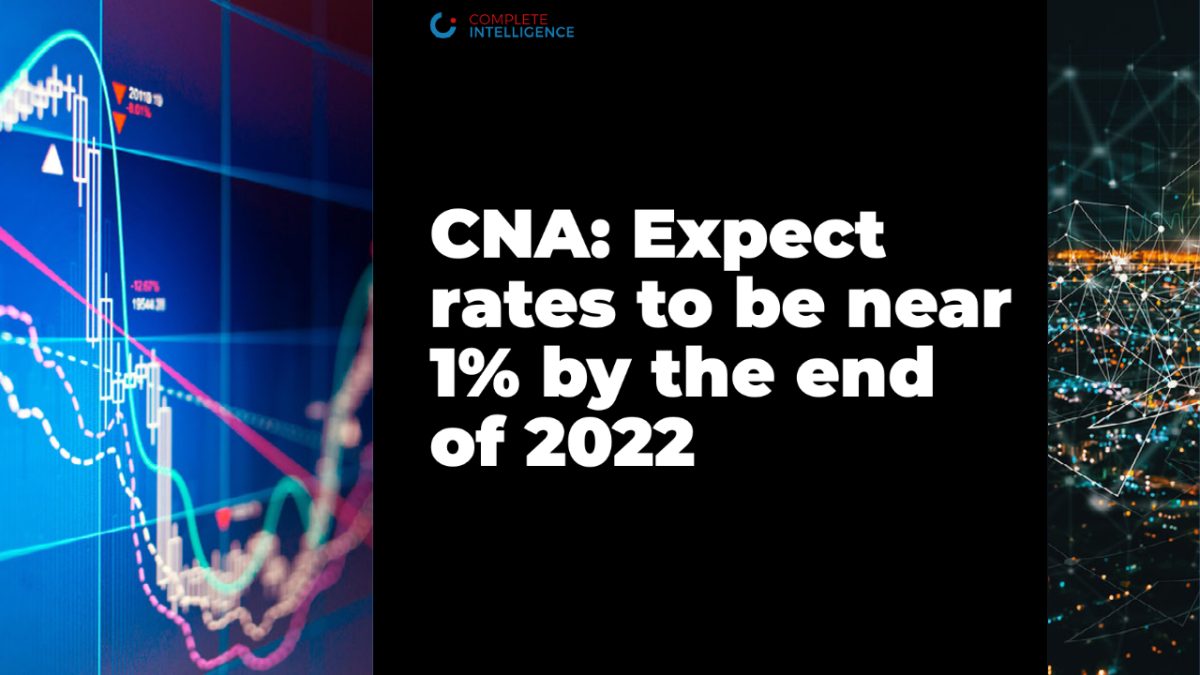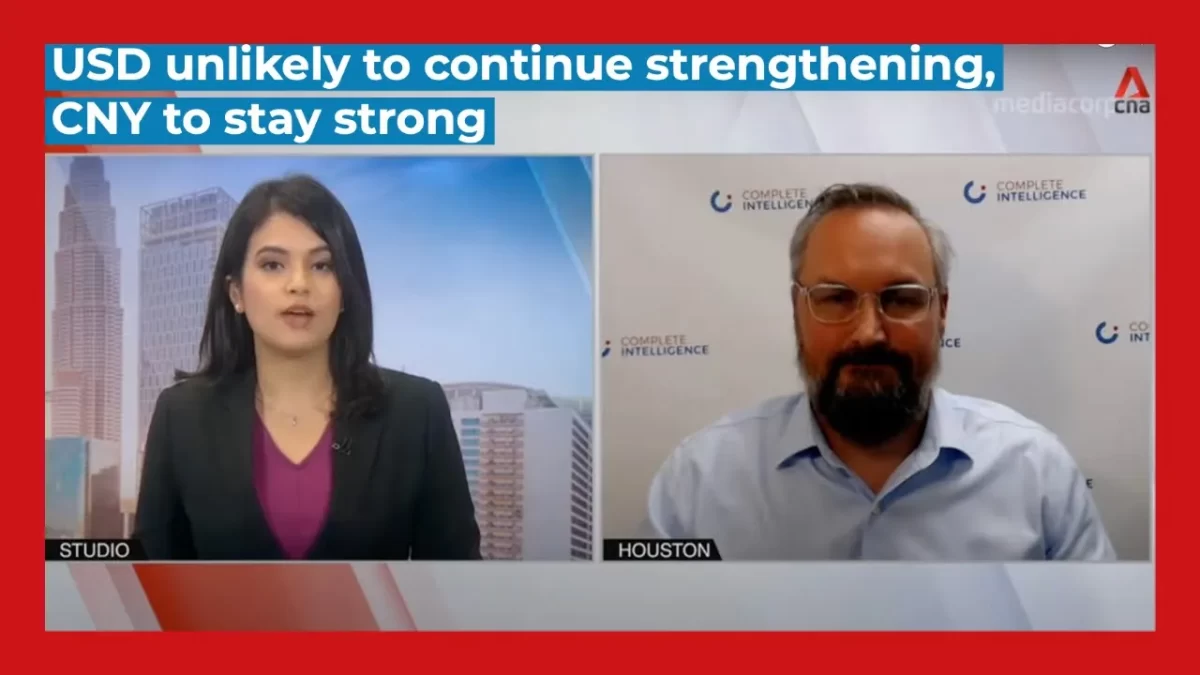Tony Nash joins Channel News Asia and discussed the possible 75 basis point hike by the Fed and what does that mean for the US economy and for the Fed’s credibility?
The full episode was posted at https://www.channelnewsasia.com. It may be removed after a few weeks. This video segment is owned by CNA.
Show Notes
CNA: Welcome back. The world’s largest cryptocurrency Bitcoin continues its downward spiral. For the 8th straight day, it briefly fell below $21,000 and is currently hovering around its December lows. Other digital coins are also sharply lower in that sell-off as investors continue to rotate out of risky assets due to the economic headwinds. Bitcoin started the week with a 15% drop, with Ethereum very even worse. And overall the total crypto market cap shrink to below $1 trillion for the first time since 2021. That’s from a $3 trillion peak in November. Now adding to crypto’s litany of pain, Coinbase has announced it will cut nearly a fifth of its workforce, or about 1000 employees, by the end of the second quarter. CEO Brian Armstrong said the company needs to manage high employee costs in an uncertain market, warning of a looming recession and another crypto winter in the months ahead. He also conceded that the company grew too quickly. Inflation pressures continue to mount in the United States. The annual Producer price index rose ten 8% in May, staying near its record high of 11.5% in March. The data is significant as prices at the wholesale level feed through consumer prices, which are running at their highest level since December 1981.
Now the focus shifts to the Federal Reserve as it kicks off its two-day policy meeting. The Fed is set to hand down its latest decision tomorrow morning. With a 75 basis point move on the table. Investors on Wall Street are now waiting to see what the US central bank will do. Stock seesaw throughout the session. Ahead of that said meeting, it hit a session lows during the final hour of trade, with both the now and the SAP 500 losing ground. The Nasdaq posted a small gain as equities closed. Mixed, we saw the yield on US treasuries continue to surge. The anticipation of an aggressive move from the Fed saw the yields on the US two-year rise and the benchmark ten-year rise higher again. For more on this, we’re joined by Tony Nash, he’s founder and CEO of Complete Intelligence, joining us from Houston, Texas. Thanks for your time today, Tony. Now 75 basis points of the hike are on the table. What does that mean for the US economy, if indeed that is what we get from the Federal Reserve?
TN: Right? It means they’re really trying to pull back inflation. I think they’re trying to kill demand so that the supply side issues in inflation are calmed a bit. Whether they hike 50 or 75 or 100 is less of an issue than the fact that it’s really hard for them to control the supply side inflation that we’re seeing right now with petrol and with oil and with food and other things. So what’s happening right now that’s really problematic is Americans for the past two months, if you look at consumer credit, it’s really risen dramatically over the past two months. And that’s when a lot of the petrol prices have really spiked. So people don’t have the spare capacity in their monthly savings to pay for higher prices for petrol and food and other things. So consumer credit is racking up really quickly.
CNA: Yeah. And does that mean, Tony, that the strength of the consumers in the US will start to inch lower because for a while it was really the consumer spending that was trying to keep the economy going?
TN: Yeah, absolutely. And as that says, consumer credit capacity is limited. You’re right. If interest rates rise, it makes it harder for those people to pay them off. Right. So that credit capacity can’t be paid down. And economic growth, consumer-driven economic growth later in the year is hard to see take off. So this summer, people are paying more in the US for gasoline and flights and really people want to take a vacation no matter what. But I think we’re really going to see some pressure on consumers in, say, September, or October. So if they hike 75 at this meeting, it just means that in two, three, six months, as they accumulate, the future Federate rises in July and September and November, it means that the cost of credit six months out is going to be dramatically higher.
CNA: Before this week, Tony, it was 50 basis points. That was what was expected after the inflation data that we got last week. All of a sudden we’re getting expectations of higher interest rate rises. Does it surprise you that it seems like the US Central Bank keeps getting surprised, but how inflation is ticking higher and it’s not turning the corner as some had expected? And what does this mean for their credibility?
TN: Yeah, it’s a good question. Am I surprised that they’re surprised? I’m shocked that they’re surprised. Right. And I think what it does is it creates, as you say, a credibility issue both for the Fed and for the US administration. So the US administration isn’t putting the right policies in place to help the supply side inflation issues at refineries with crude oil, the food and so on and so forth. But the Fed is late. The Fed should have started hiking months before they did. So many people have said this, but the Fed is late. And now they’re having to catch up super quickly and it’s going to hurt people on hourly wage jobs and in kind of the lower middle class, those are the people who are the most constrained and those are the people who are going to hurt the most.
CNA: Yes, they’re trying to play catch up. But does this force the hand of the US Central Bank to actually push through with a 75 basis point hike when that’s pretty much what most people are expecting?
TN: Yeah, well, a lot of the banks over the past couple of days have started to expect 75. Some are still at 50. I wouldn’t be surprised if they stayed with 50 if we saw that we would see markets rally going into the weekend, which might be a nice sentiment break for people. If they raise 75, then markets are still going to be very difficult and very choppy going into the weekend. So it really all depends on the decision tomorrow. But I think it also makes things more difficult in Asia and other markets. If they continue to hike, then the dollar grinds higher and it makes things like oil and other commodities that much more expensive as those dollar-denominated commodities become more and more expensive, expensive for.
CNA: Everyone around the world and that would just exacerbate the inflation pressures that we are seeing right now. Thanks so much for your insights, Tony. Tony Nash, there founder and CEO of Complete Intelligence.



